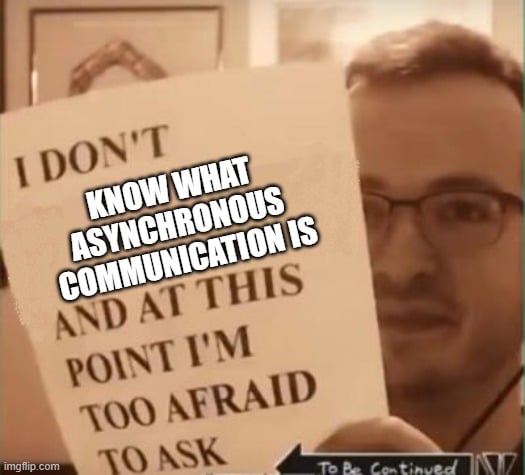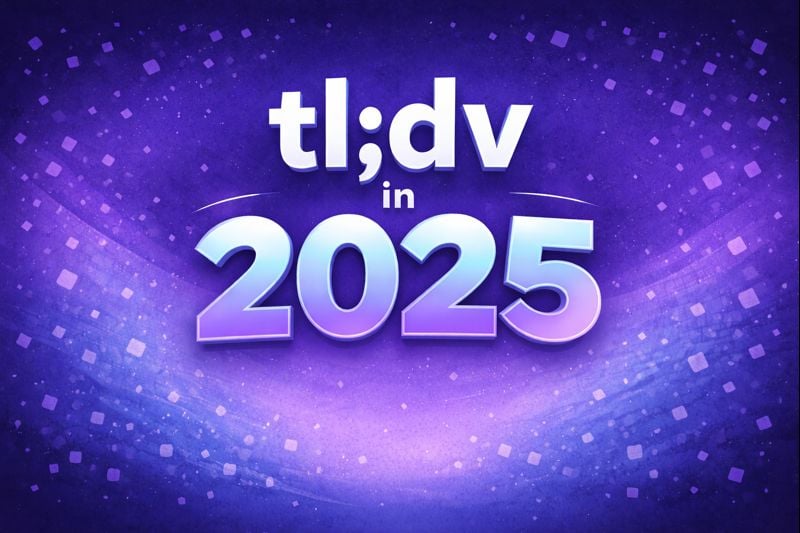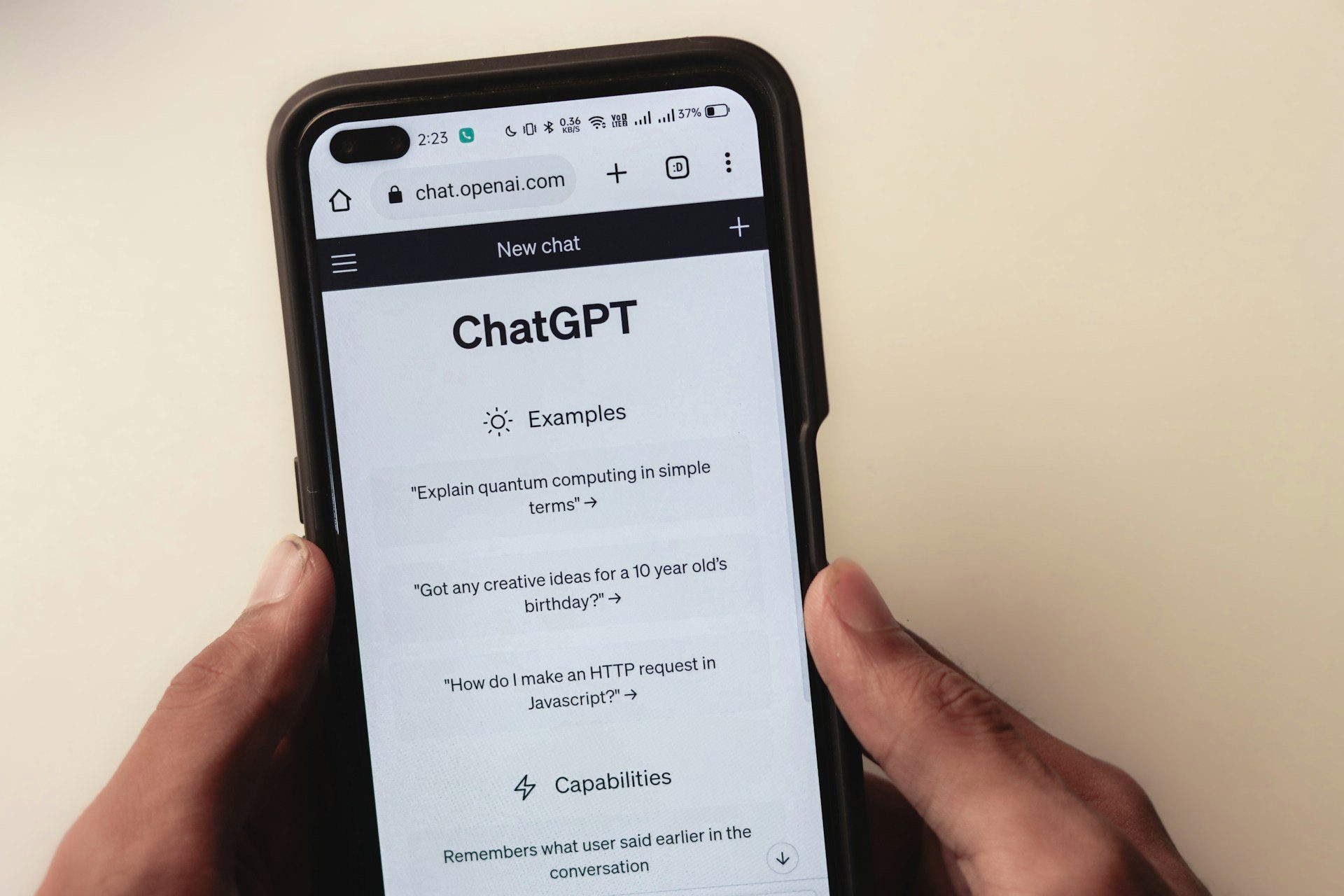Chances are you’ve stumbled across some interesting articles about remote work that mention ‘asynchronous communication’. You’re probably scratching your head at that strange word.
What is asynchronous communication, and why is it being praised as the next step in the remote work revolution?
While the term asynchronous communication may sound like a super-duper-technical-jargony word that makes your head spin, it’s actually just a fancy phrase for a very simple concept.

So what does asynchronous communication mean?
Asynchronous communication simply refers to any communication which is not based on live interaction – in other words, there can be a delay in the responses between communicating parties. ‘Asynchronous’ means the communication is not instantenous, or ‘synchronous’.
How? A timeslip, maybe? The multiverse theory, perhaps? Well, no…communicating in this way simply requires corodination, some asynchronous tools, and alignment on communication principles.
In that sense, asynchronous communication isn’t new. Take emails! We’ve been communicating asynchronously for years already, firing off an email and waiting patiently for a response (which we sometimes don’t get until days later)!
A phone call, meanwhile, is the perfect example of synchronous communication – because it relies on at least two people communicating at the same time. Simple, right?
What is asynchronous collaboration?
Asynchronous collaboration means working collaboratively without working at the same time. Imagine your colleague on the other side of the globe is logging out of work for the day. Meanwhile, you pour yourself a cup of morning coffee, log in, and pick up where he or she left off. That’s async, baby!
What is asynchronous learning?
As for asynchronous education? You guessed it. In this model of education, the learning and teaching does not happen at the same time. Classes are typically uploaded to a shared space as video resources, and students choose when to watch these classes or complete assignments. Most online courses are designed for asynchronous learning.

Why is asynchronous communication important?
Nailing the art of asynchronous communication in the remote and hybrid workplace has numerous advantages.
Benefits of asynchronous communication include:
- A better work-life balance for employees, because they can set their own work hours based on their lifestyle and time zone.
- The ability to collaborate with people located all over the world, no matter what time zone they’re in.
- A reduced need for live meeting attendance, meaning no one needs to get up at 6am for calls with the Singapore office.
- The adoption of smarter and more time-efficient communication tools, methods and principles.
- A culture of transparency, because asynchronous communication relies on work being clearly documented.
- Higher productivity among employees. If there is no expectation that an employee is reachable during set hours, they can turn off their notifications and focus on ‘deep work’.
Asynchronous communication is a lot more than simply being able to start your workday whenever you feel like it (spoiler alert, a lax approach to async work will not make this concept fly). Effective async colloaboration requires discipline, trust, transparency, collaborative tools, and the right attitude — both from the individual and across the workplace as a whole.
Synchronous vs. Asynchronous Communication
Meetings can be great. Who doesn’t love a productive and motivating meeting? tl;dv literally exists to make virtual meetings more awesome. How? We turn all your meetings into valuable async resources, so no insight uncovered in a call ever gets lost in a void.
tl;dv records Zoom meetings or Google Meet calls in such a way that any colleague who didn’t attend the call can quickly catch up on the meeting’s key takeaways. As a tl;dv user, you don’t even need to share the full recording. You can edit out a clip, tag a colleague at a specific moment, or just timestamp the parts relevant to a team.
Ever find yourself stuck in a meeting that definitely could have been an email? Are you regularly expected to attend calls even when only 10 minutes of the hour-long discussion is relevant to you? Yep, you need a slice of that asynchronous communication pie. 🥧🥧
Don’t get us wrong. Synchronous communication is highly beneficial at times. While brainstorming and problem solving can be done asynchronously via channels such as Slack, Trello, and even the humble email, there is defiinitely a certain je ne sais quoi of real-time thinking that helps get the creativity flowing.
This real-time collaboration is what we refer to as synchronous communication. Maybe a project is extremely complex, and the consequences of miscommunication are too dire. Perhaps there is a critical issue in your workplace that requires ‘all hands on deck’. Maybe you’re onboarding a new team mate for the first time. For certain situations, instant or ‘live’ communication is simply more appropriate.
But this “IRL” process is obviously not very flexible. It demands more commitment and mental exertion. With synchronous communication, calendars clashes are common, backlogs often need reshuffling, time zones become a headache, and sometimes *GASP* we’re even expected to travel to a physical place (!?!?!).
The good news is that an increasing number of tasks are becoming less and less reliant on synchronous communication thanks to technology, as well as a more open-minded approach to work. (Viva la remote work revolution!).
This means we can undertake more day-to-day work tasks and even long-term projects asynchronously. The more a workplace adopts principles of asynchronous communication, the more flexible and resilient it becomes. Woohoo!
Being ignored or left on read is my biggest pet peeve. 😂 I truly be feeling disrespected.
— ♚ Groovy ♚ (@GroovyRandall) April 21, 2019
(There’s no denying that asynchronous communication is less appreciated outside the workplace.)
What are some examples of asynchronous communication tools and techniques?
There are SO many different ways of nailing asynchronous communication. Async methods and tools can be used individually or in combination with each other. There are plenty of tools and platforms to make everything auto-magically come together. Let’s look at some aspects you should consider if your workplace is making a move toward async.
Messaging Platforms
Be it Slack, WhatsApp, Email, Intercom, and even Facebook Messenger, all of these can be used to leave messages for colleagues to pick up at a later date. Even if you’re showing a little palm tree logo saying you’re on a wonderful vacay, your colleagues’ message will be safe and sound on your return. In fact, Slack even lets you schedule messages for a specific date and time.
Project Management Tools
There are plenty of these to choose from. Monday, Atlassin, Trello, Basecamp, Asana, and Notion…. need I say more? Whatever your industry, business, or focus, there are tools to help you build a ecosystem of information and planning. Here you can upload documents, add notes, allocate tasks, and plan projects. Needless to say, these tools are essential for async teams. You could execute an entire project via project management tools without actually talking with your team even once.
Asynchronous Meetings and Video
Whether you’re screen recording with Loom or Slack, or recording a Zoom meeting with tl;dv – video is one of the most effective means of asynchronous communication. Video captures the emotional nuances, expressiveness and personality of individuals.
With screen recordings, you could record yourself demoing a new software and then upload this educational resource to a shared space. With Zoom app and Google Meet recording extensions like tl;dv, you can clip out great moments from user research sessions, candidate interviews, sales calls and presentations to share with colleagues. They’ll catch up in their own time, easy peasy.
Not to blow our own trumpet here, but using tl;dv in conjunction with your meeting software means that you can also add lots of lovely notes, highlights, and even a transcripts to share with the whole team.
Why adopt asynchronous communication in the workplace?
Now we know what it is, how can asynchronous communication be of benefit to you and your team?
Asynchronous communication is a time-saver
Time is a precious resource. While many would argue it’s a human-made construct, and even Einstein said it was an illusion (ok, let’s not get too philosophical…), it is – at least in the working world – both finite and fixed. If you have a deadline…well, you simply have a deadline.
But if you are spending all your time waiting on people to perform their tasks so you can complete your tasks, then you’re going to experience that you’re wasting time instead of spending it being productive and happy and just generally amazing.
You can block time to your heart’s content, but if Simon from production isn’t giving you the “yes/no” because he’s caught up in a meeting, you’re going to be spinning around in your desk chair until your lunch repeats on you.
By adopting an async workflow at the very foundation of your business, you’ll have permission to switch off and complete other tasks on your own initiatve, knowing the answer ‘to that other thing’ will eventually come in.
The result? More work gets done, and you can get a heady dopamine hit from ticking all that stuff off on their to-do list. Simon eventually escapes his meeting, and you’ve got your answer.
Asynchronous communication is better for mental well-being
It also allows you to adopt some pretty neat concepts that can supercharge your productivity to make that >*iLluSioN*< of time really count.
From harnessing the power of Pomodoro to mastering Deep Work, asynchronous communication gives you the power to construct a work day as you see fit. No more being a slave to the clock, no more interruptions from colleagues. Just get your head down and work until you have achieved your desired output.
Imagine not having to stress about whether you have time to squeeze in a gym session during your lunch break. Imagine not feeling pressured to reply to a Slack message right away, and comfortably turning down a meeting knowing the important parts will be documented for you later in any case.
You’ll find you’re less likely to feel guilty about sleeping a bit longer or taking that all important mental health time. The work still gets done and is done to a high standard.
For obvious reasons, the flexibility awarded by asynchronous work includes a better work-life balance, and more productivity. If an employee prefers to sleep in late and then blitz through their work in the evening – async work allows them to do this! Asynchronous workplaces could even prevent burnout and reduce sick days.
(Asynchronous collaboration is the key to a better work-life balance AND productivity – it’s a win-win!)
Master documentation, and never lose a note again
One of the greatest things about the #asynclife is that you will never lose a note, idea, or message again.
The mind of a human may be a marvel, but it has its limits. The brain’s working memory cannot physically remember more than four things at any one time. So in a busy, fast-paced environment, when you’re juggling multiple tasks, projects, and deadlines, it’s very easy to be told something and instantly forget it. Everybody has had that blood-curdling moment when they realize they’ve forgotten to email a report or sign an important document.
Thankfully, because all async communication is written and documented you will never lose a single note. *Phew*
You’re not going to forget about some action points you jotted on a notepad and then promptly lost. You can’t forget what Mary said during that brainstorming session because it’s right there on your tl;dv dashboard (and searchable, too!).
There are RECEIPTS for everything.

No idea will ever fall through the cracks again, and you’ll always have a stash of brilliant ideas just waiting to be implemented when the time is right.
Asynchronous communication creates a culture of honesty and transparency
Do you know why people can be mean on the Internet? It’s because of a little thing called ‘online disinhibition’. And while trolling isn’t cool (#BeNice), this same psychological concept can actually create a more upfront way of communicating — particularly for those who consider themselves to be more introverted.
“This invisibility gives people the courage to go places and do things that they otherwise wouldn’t.” Suler
By leveraging the same idea of open online communication into an asynchronous work scenario, individuals are less likely to be anxious about authority.
As well as having the time and space to plan out exactly what they are saying, individuals can be more honest and speak freely without the fear of being judged or ridiculed. This, in turn, allows people to share ideas without fear, take the time to think over their responses without the pressure of someone expecting an instant response and generally just allows communication to be more thoughtful.
Are there disadvantages to ssynchronous communication?
It all sounds pretty darn wonderful so far, right?
Sure, but there are some challenges to overcome with asynchronous communication. Not all workplaces are mature enough to incorporate asynchronous communication into their culture. If your organization is going to pull of async work, there needs to be trust, alignment on key communicative principles, and competence within the async technology.
With the right protocols in place and effective communication, challenges can of course be minimized.

Miscommunication
This is the biggy. For async collaboration to work, people have to be extremeley mindful of how their words can be interpreted.
Pinging off messages is great, but have you ever had that ominous, vague message from a line manager saying “We need to talk”?
Ultimately, 99% of the time these are totally innocent messages but they can easily strike fear.
One way to counteract this is to utilize video and voice to communicate. While a video meeting doesn’t need to be done in real-time, a recorded video can add context and nuance that lessens the over-analysis of the receiver. Things such as tone of voice, body language, and general inflection can help your brain go “Ahhh, this is not a threat.”
Would video be a bit overkill for the communication needed? No worries! Just chuck in a friendly emoji or meme into your message. While not strictly “professional” a simple smiley face can instantly dissipate anxiety. 😊😊😊
Isolation
Humans are social creatures. Even if we insist we don’t, we do in fact need interaction with fellow human beings on a daily basis.
It’s easy to get into a bit of a funk if you’re spending days alone. When we worked in offices, many of us took for granted the amount of socializing we did at work. Now, many people found they were more reliant than they thought on the social chitchat with Karen at the water cooler.
Some people choose to cowork for this reason. Others are surrounded by people in a coffee shop or on a beach (We’re not jealous, really we’re not…😢) – but for others? Well, they may look up and realize they’ve not left the house in a month and they are wearing the same sweatpants as in May.
Again, video communication is a great way to break through this rut of isolation, and it can be done async as well.
Equally, another way to break through isolation is to use messaging apps for more than just work. Check in with colleagues and staff members, send them a funny TikTok, or even just leave them a voice message to say “Hi”.
Fortunately, the flexibility of async work also allows employees to allocate more time and focus toward their social life. If you find you’re spending too much time alone while working, it’s worth making a habit of doing at least on social (non work-related) thing each day.
Time lag
There can be delays when it comes to the asynchronous model. You may find that you need a response right now, but the one to give it is 12 hours ahead and getting some well-deserved shut-eye.
While it may be tempting to start pinging off messages to chase, this can be rectified with some simple actions.
Create solid deadlines, with mini milestones to hit, so you know you’ll get your answer when it’s needed.
You can also implement a ‘traffic light’ system of prioritization. Red, amber, green. This will let your colleague know when something super-urgent. However this also relies on everyone being mindful, and allocating ‘red’ sparingly.
Summarizing the main takeaways of meetings is also one way of saving your colleagues’ time. Use tl;dv to timestamp important meeting moments or tag team mates directly within the call.
Boundary creep
Occasionally there will be one person who doesn’t ‘get; it. Typically this is someone who has experienced a bit of a toxic work environment in the past. They will nod and smile agreeingly to the concept but then start pushing boundaries over what is acceptable. Yes, you can message someone at 2 am about the report next week, but no, do not chase them with 17 messages almost immediately afterward.
This can be dealt by communicating and aligning on ‘fair play’ guidelines. Create a culture of what is, and what is not acceptable. Rather than punish offenders, dig into WHY they are taking these actions.
Perhaps they are stressed about a deadline. Maybe they feel like they have too much work on, or they’re dealing with a personal issue. By openly communicating and setting boundaries for all, the concept will work more effectively.
(You’ve got to be mindful of setting boundaries when working asynchronously…)
We ❤️❤️❤️❤️❤️❤️ Asynchronous Communication
The old way of working, in which everyone is expected to be readily available at set hours, is not compatible with effective remote work. While there will always be some workplaces where colleagues need to be in same place at the same time, there is almost always room to make more tasks asynchronous. For many businesses, at least 90% of work can be done remote and asynchronously.
With a solid foundation of boundaries, expectations, and good communication (plus async power tools like tl;dv at your disposal) you can build an incredible business that brings out the creativity, productivity and well-being of your team.
Ready to embrace the async way of life? Here at tl;dv, to paraphrase the great Hall & Oates, 🎵♬ We’re here to make your async dreams come true, (You, you, you, ooh ooh ooh, you) 🎵♬
We live and breathe our philosophy. Our entire team is 100% remote and 100% async. And we managed to build an award-winning asynchronous collaboration tool for Zoom ans Google Meet, so that’s pretty good testament to the power of async, right?





